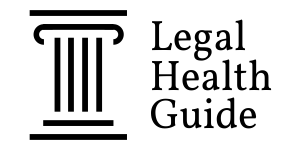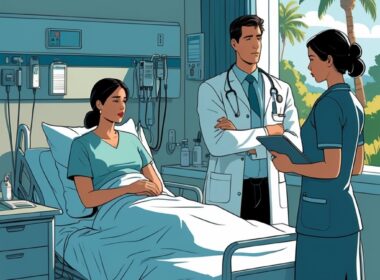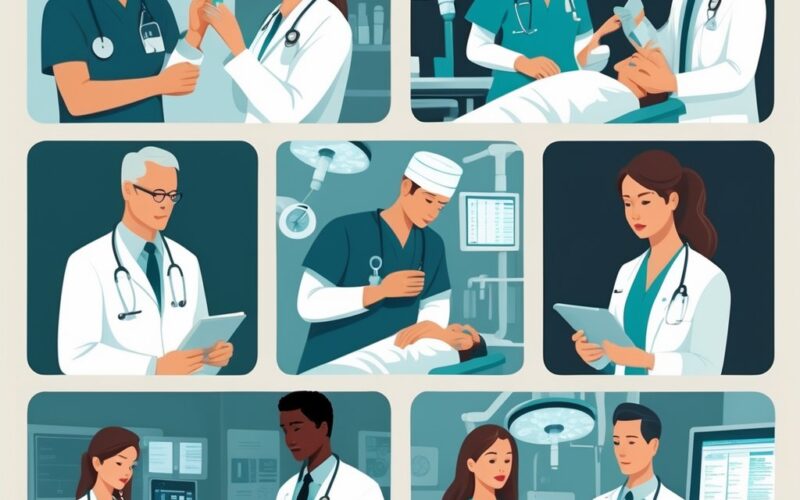Medical malpractice happens when healthcare providers fail to meet the standard of care expected in their profession, causing harm to patients.
Understanding the different types of medical errors can help you recognize when something has gone wrong with your medical treatment. You’ll also know when you might need to take legal action.
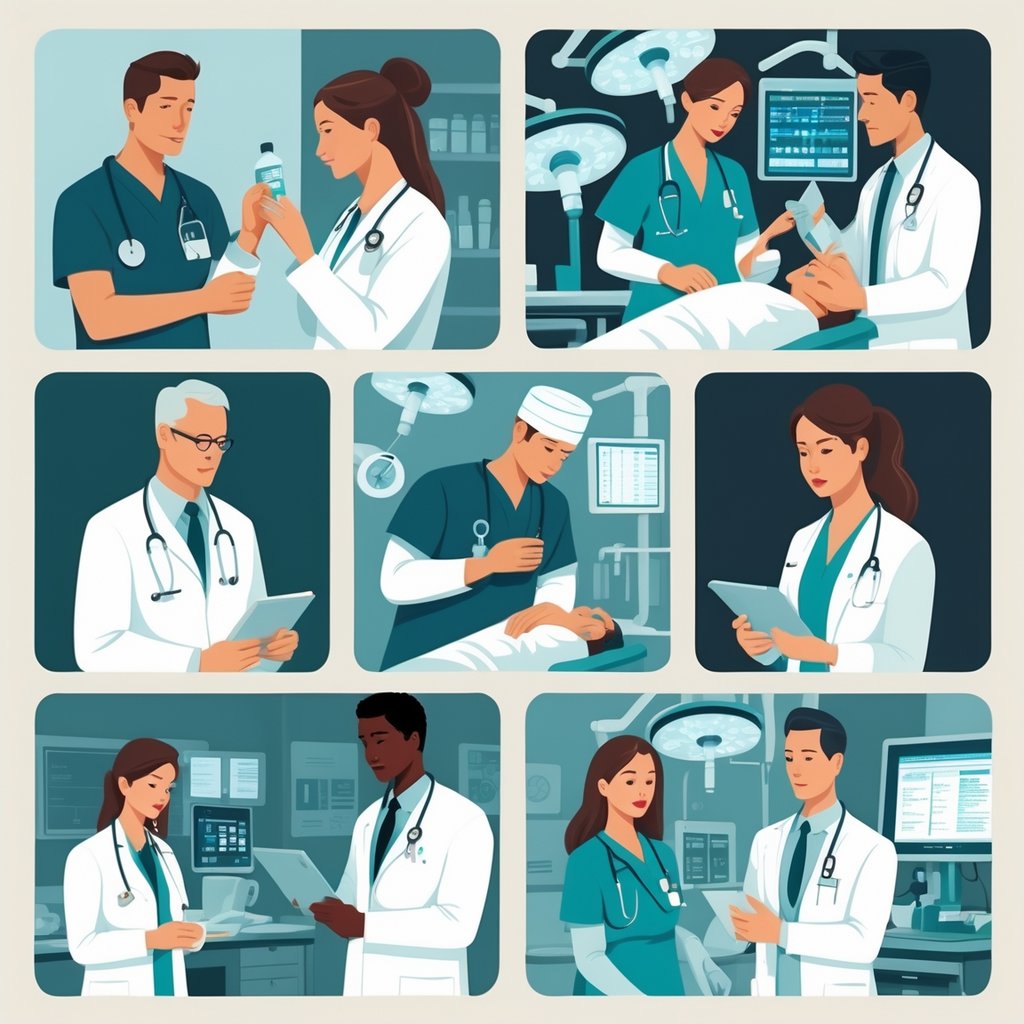
The most common forms of medical malpractice include misdiagnosis or failure to diagnose conditions, surgical errors, medication mistakes, birth injuries, and anesthesia problems. These errors can happen in hospitals, clinics, emergency rooms, and other healthcare settings.
Each type of malpractice has specific legal requirements that must be met to prove negligence occurred.
Key Takeaways
- Misdiagnosis and surgical errors are among the most frequent types of medical malpractice cases that harm patients
- Medical malpractice requires proving that a healthcare provider fell below the standard of care and caused specific injuries
- You have legal rights to seek compensation when preventable medical errors cause you harm or worsen your condition
Understanding Medical Malpractice

Medical malpractice happens when healthcare providers fail to meet accepted standards of care and their actions harm patients.
Three key elements must exist: a doctor-patient relationship, negligence that falls below professional standards, and resulting injury.
Definition and Key Legal Concepts
Medical malpractice is a form of professional negligence. It happens when healthcare providers deviate from accepted medical standards and directly cause harm to you as the patient.
Key legal concepts include:
- Professional duty: Healthcare providers must meet established care standards
- Breach of duty: Actions or inactions that fall below these standards
- Causation: The breach must directly cause your injury
- Damages: You must suffer actual harm, not just disappointment
Not every mistake is a medical malpractice claim. Poor outcomes alone don’t equal malpractice.
You must prove the provider’s actions were unreasonable compared to what other competent professionals would do.
A valid doctor-patient relationship must exist. The healthcare provider needs to agree to treat you, and you need to accept their care.
Standard of Care and Negligence
The standard of care means the level of treatment that competent healthcare professionals in the same specialty would provide under similar circumstances.
This standard varies depending on medical specialty, location, and available resources.
Negligence happens when your healthcare provider’s actions fall below this accepted standard. Courts look at what a reasonable doctor would have done in the same situation.
Factors that influence standard of care:
- Medical specialty and training level
- Available technology and resources
- Patient’s specific condition and circumstances
- Generally accepted medical practices
Expert medical testimony usually explains whether negligence occurred. These experts point out how the provider’s care differed from accepted practices.
The standard isn’t perfection. Healthcare providers aren’t responsible for every bad outcome or honest mistake that meets professional standards.
Elements of a Medical Malpractice Claim
Your medical malpractice lawsuit must prove four specific elements to succeed in court.
Missing any element usually means your case will be dismissed.
The four required elements are:
- Duty: A doctor-patient relationship existed
- Breach: The provider violated the standard of care
- Causation: The breach directly caused your injury
- Damages: You suffered actual harm or losses
Proving causation means showing:
- The negligence directly caused your injury (actual causation)
- Your injury was a foreseeable result (proximate causation)
Damages include medical expenses, lost wages, pain and suffering, and future care costs.
You can’t recover compensation without proving real financial or physical harm.
Medical malpractice claims need expert testimony to establish these elements.
Most cases involve complex medical evidence that only professionals can interpret for judges and juries.
Misdiagnosis and Delayed Diagnosis
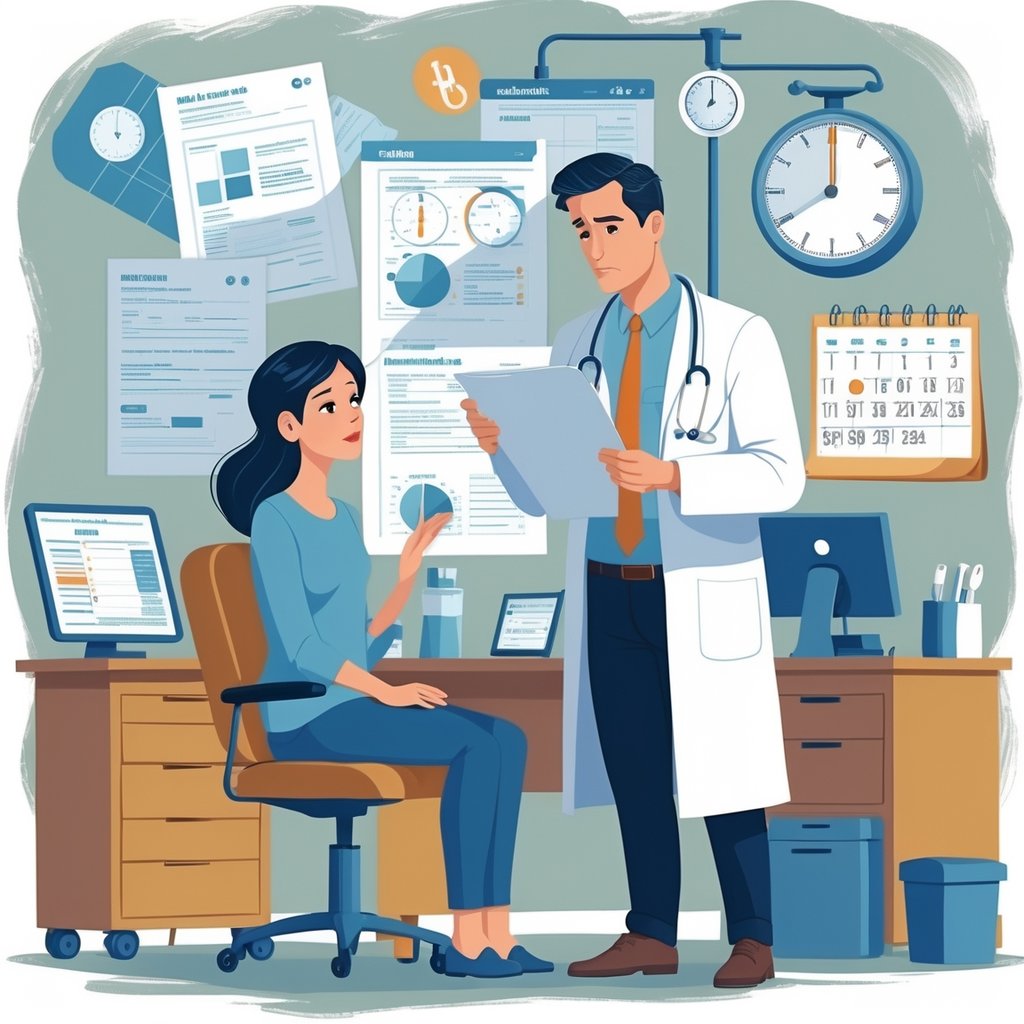
Misdiagnosis and delayed diagnosis are the most common forms of medical malpractice.
These medical mistakes can lead to unnecessary treatments, progression of serious diseases, and significant patient harm.
Misdiagnosis: Causes and Consequences
A misdiagnosis happens when your healthcare provider identifies the wrong medical condition.
This creates a chain of problems that can seriously affect your health.
Common causes of misdiagnosis include:
- Doctors failing to order proper tests
- Misreading lab results or imaging scans
- Not considering all possible conditions
- Poor communication between medical staff
When you get the wrong diagnosis, you might receive treatments that don’t actually help your real condition.
These unnecessary treatments can cause side effects and waste precious time.
Your actual medical problem gets worse while you’re treated for something else. Cancer misdiagnosis is especially dangerous because early-stage cancer often gets mistaken for less serious conditions.
The financial costs pile up. You pay for treatments that don’t work while your real condition becomes harder and more expensive to treat later.
Delayed Diagnosis and Harm
This delay can be just as harmful as a wrong diagnosis.
Time-sensitive conditions suffer the most from delays. Heart attacks, strokes, and infections can cause permanent damage or death when treatment comes too late.
Cancer is one of the most serious examples of delayed diagnosis.
Cancer only gets worse without treatment, so timing really matters for your survival chances.
Your medical malpractice case needs to show that an earlier diagnosis would have improved your outcome.
You have to show that the delay directly caused extra harm to your health.
Emergency rooms see a lot of delayed diagnosis cases. Doctors work under pressure, and patients might have unclear symptoms.
Failure to Diagnose Serious Conditions
Failure to diagnose means your doctor completely misses your medical condition.
This is the most severe kind of diagnostic error you can experience.
Commonly missed conditions include:
- Heart disease – Symptoms dismissed as anxiety or indigestion
- Cancer – Early signs overlooked or blamed on minor issues
- Blood clots – Leg pain or shortness of breath ignored
- Infections – Serious bacterial infections treated as viral illnesses
Your doctor should follow accepted medical practices when checking your symptoms.
This includes making a list of possible diagnoses and testing to narrow them down.
Medical malpractice cases need proof that your doctor failed to meet the standard of care.
You also have to show that this failure directly caused your injuries or made your condition worse.
The legal system knows that some conditions are just hard to diagnose. Still, doctors need to use reasonable care and follow proper steps when looking into your health concerns.
Surgical Errors and Related Mistakes
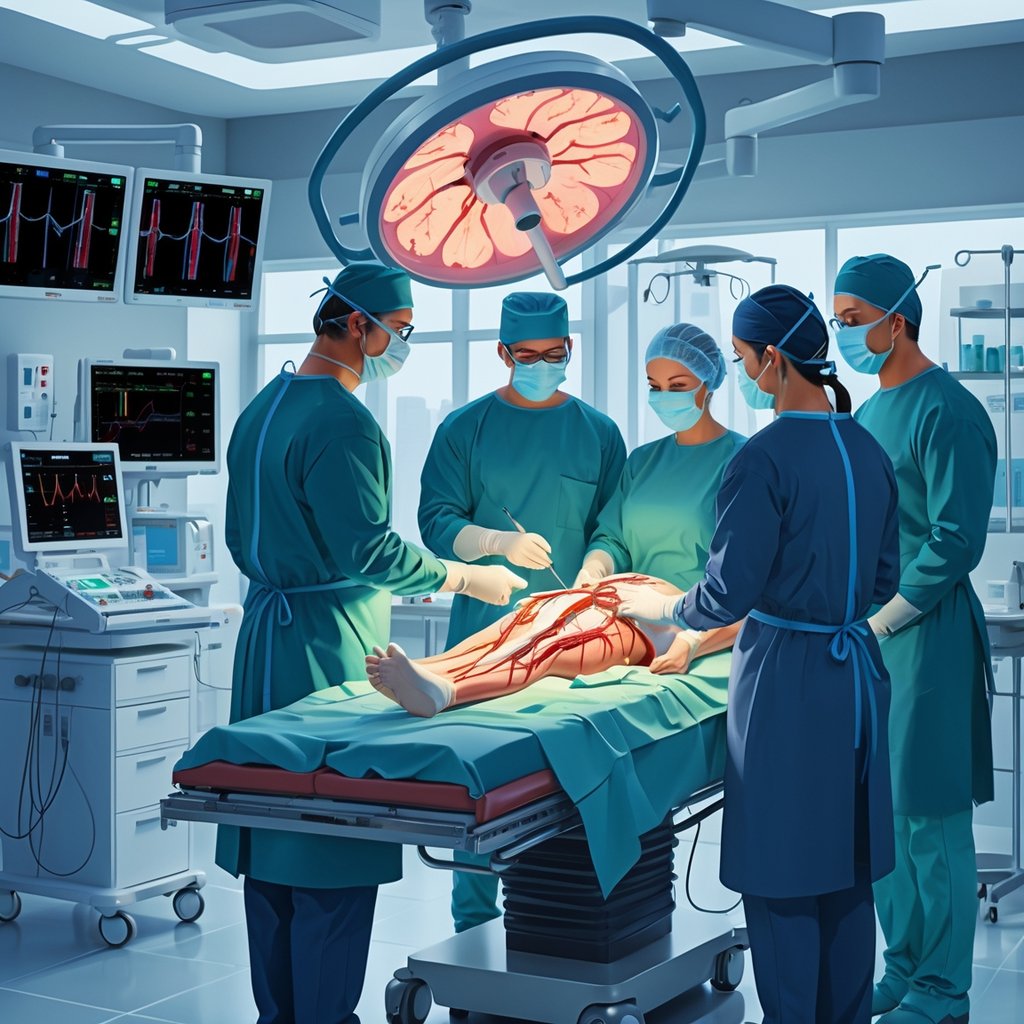
Surgical errors are some of the most serious forms of medical malpractice. These range from operating on the wrong body part to leaving instruments inside patients.
These mistakes can happen before, during, or after surgery. They often lead to severe complications or extra procedures.
Surgical Error Types
Common surgical errors happen at different stages of the surgical process.
Knowing these types helps you spot when medical negligence might have happened.
Wrong-site surgery happens when surgeons operate on the wrong body part. This includes operating on the wrong limb, organ, or even the wrong side of your body.
Anesthesia errors involve mistakes with anesthesia medications. Your anesthesiologist could give you the wrong type or the wrong dose.
They might also fail to monitor your vital signs properly during surgery. Anesthesia malpractice can cause brain damage, heart problems, or even death.
Retained surgical instruments happen when medical tools stay inside your body after surgery. Surgeons sometimes leave sponges, scissors, or clamps behind.
Nerve damage can happen if surgeons injure nerves directly or position you incorrectly during surgery. This may cause numbness, weakness, or paralysis in certain areas.
Surgical Mistakes: Wrong Site, Wrong Patient
Wrong-site surgeries break basic patient safety rules.
These mistakes still happen, even with verification procedures in place.
Medical teams should mark your surgical site before the procedure. They need to check your identity and confirm the right procedure several times.
Wrong-patient surgery happens when surgeons operate on the wrong person. Usually, this comes from problems in patient identification systems.
You might need extra surgeries to fix the damage. Unnecessary procedures on healthy body parts can cause ongoing health problems.
Your original medical issue might not even get treated. That can make your health worse and create emergencies later.
Postoperative Complications and Infection
Surgical infections can develop when medical tools aren’t properly sterilized before your procedure.
Bacteria can enter your body through contaminated surgical instruments.
These infections make recovery harder. You might need to stay in the hospital longer and get more antibiotics.
Poor post-surgical care brings its own risks. Your medical team should watch your healing and look for warning signs.
Common postoperative complications include:
- Wound infections from improper sterilization
- Bleeding from poor surgical closure
- Blood clots from not enough post-surgery monitoring
- Pneumonia from bad respiratory care
Surgical complications can lead to long-term health issues or even death. Some infections become life-threatening if doctors don’t treat them quickly.
Your surgical team has a duty to prevent these issues with proper sterilization and monitoring during recovery.
Birth Injuries and Obstetric Malpractice

Birth injuries from medical negligence can cause lifelong disabilities for newborns and devastating consequences for families.
Medical errors during childbirth often result from preventable mistakes by doctors, nurses, and other healthcare providers.
Common Birth Injuries
Several types of birth injuries often result from obstetrical malpractice. These injuries can happen during pregnancy, labor, or delivery when medical professionals don’t provide proper care.
Physical Birth Injuries:
- Broken bones, especially collar bones
- Facial nerve damage
- Cuts and bruises from surgical instruments
- Shoulder dystocia injuries
Neurological Birth Injuries:
- Brain damage from oxygen loss
- Spinal cord injuries
- Nerve damage in arms and hands
- Developmental delays
Medical malpractice can happen in so many ways during birth. Doctors might use too much force during delivery or miss warning signs of fetal distress.
Improper use of forceps or vacuum extractors often causes injuries. Sometimes healthcare providers don’t perform emergency C-sections when needed.
Cerebral Palsy and Erb’s Palsy
Cerebral palsy affects movement and posture because of brain damage before, during, or after birth. Oxygen loss to the baby’s brain during delivery is a common cause.
Causes of Cerebral Palsy:
- Not monitoring fetal heart rate
- Delayed emergency C-section
- Untreated infections during pregnancy
- Medication errors
Erb’s palsy means nerve damage in the baby’s shoulder and arm. Usually, this happens when doctors pull too hard on the baby’s head during birth.
Risk Factors for Erb’s Palsy:
- Large baby size
- Difficult vaginal delivery
- Shoulder dystocia
- Prolonged labor
Both conditions can cause lifelong disabilities that need ongoing medical care. Early diagnosis and treatment might help reduce some symptoms.
Perinatal Hypoxia and Birth Trauma
Perinatal hypoxia happens when babies don’t get enough oxygen before, during, or after birth. This can cause brain damage and other serious problems.
Missing the signs of oxygen depletion is a critical failure from medical staff. Healthcare teams need to monitor fetal heart rates and oxygen levels all through delivery.
Common Causes:
- Umbilical cord problems
- Placental complications
- Prolonged labor
- Maternal bleeding
Birth trauma covers a range of injuries during delivery. These can be as minor as bruises or as severe as brain damage needing immediate care.
Physical trauma often comes from poor delivery techniques or missed complications. Medical professionals need to act fast to prevent permanent harm.
Warning Signs Healthcare Providers Must Monitor:
- Abnormal fetal heart patterns
- Meconium in amniotic fluid
- Excessive bleeding
- Changes in baby’s movement
Medication and Anesthesia Errors
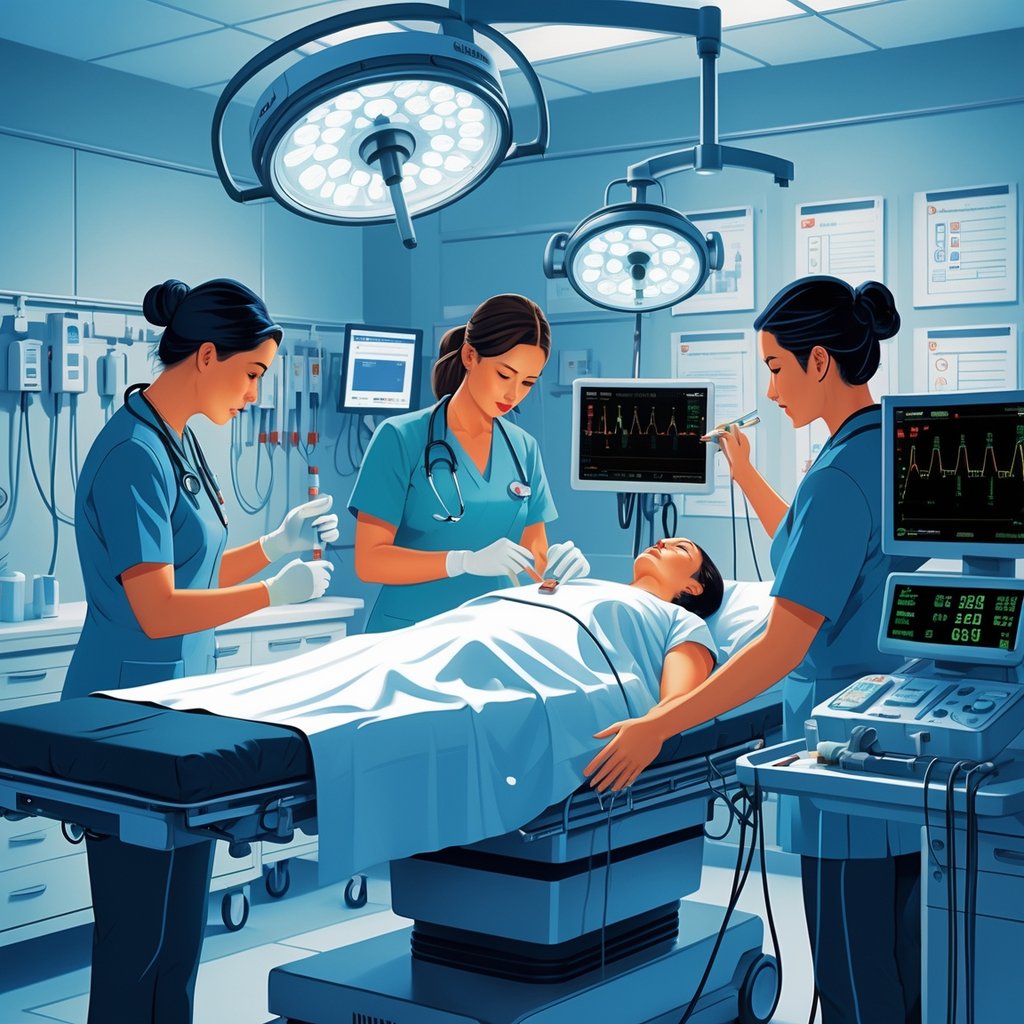
Drug mistakes rank among the most dangerous forms of medical malpractice. Thousands of patients get harmed by incorrect prescriptions, dosing errors, and surgical complications.
These errors cause permanent injuries, severe reactions, and sometimes death when providers don’t follow protocols.
Medication Errors in Prescription and Administration
Healthcare providers make a range of medication mistakes that hurt patients. Wrong drugs, incorrect dosages, and bad timing can all put your safety at risk.
Common prescription errors include:
- Writing the wrong drug name
- Calculating incorrect doses
- Missing dangerous drug interactions
- Prescribing medications you’re allergic to
Pharmacy mistakes add to medication errors. Pharmacists sometimes fill prescriptions wrong or miss doctor mistakes.
They might give the wrong strength or swap out a medication without asking. Administration errors happen in hospitals and clinics too.
Nurses sometimes give meds the wrong way or at the wrong time. They might not check your response to new medications.
These mistakes can cause organ damage, toxic reactions, or treatment failures. Some patients end up with new health problems and more expenses.
Anesthesia Errors During Surgery
Anesthesia errors during surgery can be life-threatening if the medical team doesn’t manage things properly. Reports show these mistakes are on the rise and often go unreported.
Major anesthesia error types:
- Dosage mistakes: Too much anesthesia can cause brain damage or death, too little might let you wake up mid-surgery
- Monitoring failures: Missing changes in your heart rate, blood pressure, or oxygen
- Equipment problems: Broken ventilators or monitors that no one fixes fast enough
- Intubation errors: Trouble inserting breathing tubes that cut off oxygen
Wrong-site surgery and anesthesia mismanagement break serious protocols. Anesthesiologists need to track your vital signs at all times.
Outcomes can include brain damage, nerve injury, paralysis, or cardiac arrest. Some patients end up with permanent disabilities.
Anaphylaxis and Drug Reactions
Severe allergic reactions to meds can turn deadly if providers don’t act quickly. Anaphylaxis closes your airways and drops your blood pressure.
Medical teams should always ask about allergies before giving anything. They need to watch for signs like trouble breathing, swelling, or skin changes.
Critical response steps include:
- Stopping the offending medication
- Giving epinephrine
- Providing oxygen
- Watching your vital signs closely
Some reactions creep up over hours or days. Providers should warn you about what to look for at home and document all allergies in your chart.
If teams ignore allergy warnings or delay treatment, you could suffer permanent organ damage or worse. Preparation and quick action can prevent most serious drug reactions.
Hospital-Acquired Infections and Patient Neglect
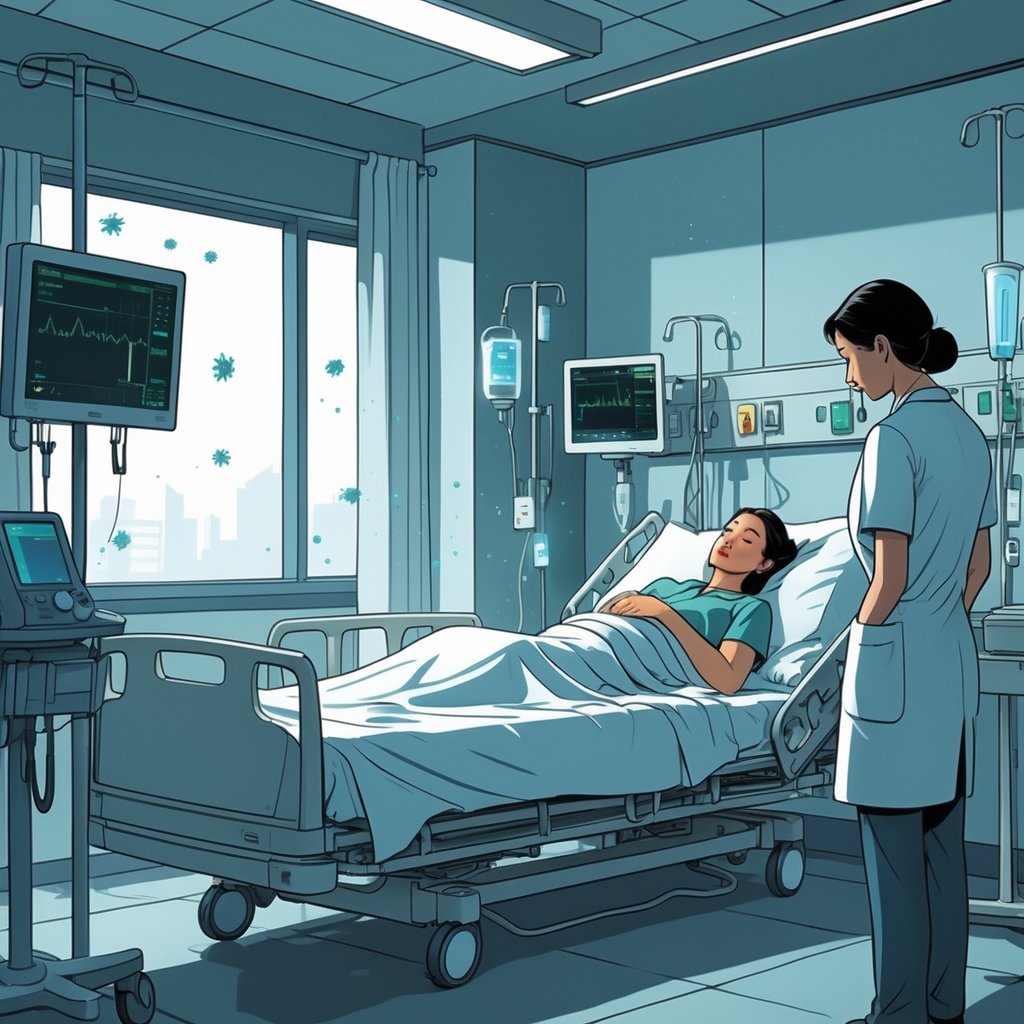
Hospital-acquired infections often result from poor sanitation and weak infection control. Bedsores develop when patients don’t get proper repositioning or skin care.
These preventable problems usually come from neglect and can lead to serious medical complications.
Hospital-Acquired Infections (HAI)
A hospital-acquired infection starts 48 hours or more after admission. It’s not something you had when you came in.
Common HAI causes include:
- Poor hand hygiene from staff
- Not sterilizing medical instruments
- Contaminated devices
- Dirty rooms
HAIs count as malpractice when they come from negligence. Bad sanitation or improper antibiotic use are big culprits.
Risk factors that raise your chances of HAIs include long-term use of catheters or breathing tubes. Using antibiotics for too long also increases risk.
Patients with weak immune systems face extra danger. HAIs can make your condition worse and keep you in the hospital longer.
Bedsores and Pressure Ulcers
Bedsores form when you stay in one position too long. Constant pressure cuts off blood flow to skin and tissue.
Bedsores usually show up on:
- Tailbone and buttocks
- Heels and ankles
- Shoulder blades
- Back of head
Early bedsores look like red, sore patches. If things get worse, they can turn into deep wounds that reach muscle and bone.
Hospital staff should turn bedridden patients every couple of hours. They need to keep your skin clean and dry too.
Nutrition and hydration help prevent skin breakdown.
Warning signs include:
- Skin discoloration or warmth
- Swelling around the area
- Pus or drainage
- Spots that don’t lighten when pressed
If left untreated, bedsores can lead to nasty infections. Some cases need surgery or cause permanent disability.
Failure to Prevent Infection
Hospitals have to follow strict infection control rules to protect you. When staff skip these steps, infections spread fast.
Key prevention measures:
- Proper hand washing before and after seeing patients
- Using sterile equipment
- Isolating contagious patients
- Following medication protocols
Staff must clean wounds and devices properly. Infections at these sites often mean someone got careless.
Short staffing makes things worse. Overworked nurses may skip safety steps to save time.
Dirty rooms, contaminated surfaces, and bad air filtration help germs spread. Hospitals need to keep things clean and replace equipment as needed.
If you get an infection from staff negligence, you might have a malpractice claim.
Defective Medical Devices and Dental Mistakes

Medical malpractice isn’t just about surgery errors. Defective medical devices that malfunction and dental mistakes can cause serious harm too.
Defective Medical Device Injuries
Defective medical devices can injure or kill if they stop working right. These failures happen with things like pacemakers, dialysis filters, or insulin pumps that break down too soon.
Common device problems include:
- Hip and knee replacements that fail early
- Metal implants that cause metal poisoning
- Pacemakers that quit
- Dialysis machines that malfunction
Device defects usually fall into four groups. Design defects mean the device was poorly planned from the start.
Manufacturing defects happen during production. For example, a weak spot in a surgical blade could snap off inside you.
Instruction defects come from unclear directions for using equipment like dialysis machines. When staff use the device wrong, patients can get hurt.
Some hospitals keep using recalled devices after warnings. That puts patients in danger for no good reason.
Dental Errors and Malpractice
Dental mistakes count as malpractice if dentists don’t give proper care. Any dental professional can mess up, from dentists to assistants and hygienists.
Common dental malpractice claims often come from preventable mistakes during treatment. Pulling the wrong tooth is a classic example.
Frequent dental errors include:
- Nerve damage during work
- Sinus perforations
- Infections due to poor care
- Leaving instruments in your mouth
Endodontic procedures are the second most common dental malpractice claim. Bad root canals can cause lasting damage.
Dental staff sometimes fail to spot gum disease or oral cancer early. Missing these issues can lead to bigger health problems.
Dental mistakes can mess up your quality of life for years. Some people need more surgeries or lose mouth function permanently.
Other Forms of Malpractice and Legal Remedies
Medical malpractice covers more than just surgical errors or misdiagnosis. It also includes situations where doctors don’t provide proper treatment or where mistakes lead to death.
When these problems happen, experienced legal professionals can help victims and families pursue compensation and justice.
Failure to Treat
Doctors sometimes recognize a medical condition but don’t give the right care. This isn’t the same as misdiagnosis since the doctor knows what’s wrong but doesn’t act.
A common example is when a doctor sees abnormal lab results but does nothing. Ignoring these results can make your condition worse.
Some patients get sent home from the hospital before they’re ready. If you still need care but the doctor discharges you too soon, you could face serious complications.
Emergency room doctors have missed symptoms or skipped important tests. That kind of mistake can be life-threatening in serious situations.
Doctors should refer you to a specialist if your condition needs advanced care. Waiting too long can cause lasting harm.
Wrongful Death in Medical Malpractice
Wrongful death means medical negligence directly caused a patient’s death. Families can file lawsuits to seek compensation for their loss.
These cases often involve serious conditions like cancer where a late diagnosis proves fatal. An earlier diagnosis might have saved the patient.
Surgical mistakes can also cause wrongful death. Operating on the wrong part or leaving instruments inside someone can lead to deadly infections. Sometimes, anesthesia errors during surgery result in brain damage or death.
Key elements in wrongful death cases include:
- Proof that negligence directly caused death
- Medical records showing substandard care
- Expert testimony from other doctors
- Evidence of financial losses to the family
Families can recover money for medical bills, lost income, and emotional pain. The amount depends on the patient’s age, income, and family situation.
Role of a Malpractice Lawyer or Attorney
A medical malpractice lawyer focuses on cases against doctors and hospitals. These attorneys know the details of medical issues and the legal steps needed to prove negligence.
Your lawyer will review your medical records closely. They’ll work with medical experts who can explain how your doctor’s care missed the mark. This expert testimony is usually necessary to win.
A medical malpractice attorney handles:
- Filing paperwork within legal deadlines
- Gathering medical evidence and records
- Finding expert witnesses to support your case
- Negotiating settlements with insurance companies
- Representing you in court if needed
Most malpractice lawyers work on contingency fees. You don’t pay unless they win. They usually take 30 to 40 percent of any settlement or award.
Pick a lawyer with real experience in medical malpractice. These cases are tougher than other injury claims and need specialized medical knowledge.
Frequently Asked Questions
Medical malpractice claims usually fall into specific categories based on the mistake or negligence involved. Knowing the legal requirements for each type helps patients decide if they have grounds for a lawsuit.
What are the primary categories of medical malpractice claims?
The largest percentage of medical malpractice claims relate to diagnostic errors at 34.1 percent. Surgical errors make up 21.4 percent, and treatment mistakes come in at 21.1 percent. Together, these three categories make up most malpractice lawsuits in the United States.
Diagnostic errors include misdiagnosis and failure to diagnose serious illnesses. Doctors sometimes miss cancer, heart attacks, strokes, or other critical problems.
Surgical errors happen during operations. These can include wrong-site surgery, anesthesia mistakes, and issues after surgery. Treatment errors involve giving the wrong treatment or not treating a known condition.
Birth injuries, medication mistakes, and hospital-acquired infections also make up a big part of malpractice claims. Each one needs specific evidence to prove negligence.
How does a misdiagnosis or delayed diagnosis lead to a malpractice suit?
Misdiagnosis or failure to diagnose is the most common form of medical malpractice. You have to show that a competent doctor would have made the right diagnosis in the same situation.
The key question is if the delay caused harm that could’ve been avoided. For example, if cancer goes undiagnosed for months, you need to show that earlier detection would have improved your odds.
You’ll need medical expert testimony to show what a reasonable doctor should have done. The expert explains how the misdiagnosis broke accepted standards.
Cancer misdiagnosis cases often end in tragedy because early detection really boosts survival chances. If the diagnosis comes too late, treatment options shrink fast.
What constitutes a surgical error within the context of medical malpractice?
Surgical errors cover everything from operating on the wrong patient or body part to poor care after surgery. Wrong-site surgery is one of the most obvious forms of malpractice.
Other mistakes include leaving instruments inside patients, damaging organs or nerves, and doing unnecessary procedures. Bad surgical technique that leads to complications may also count.
Unsanitary conditions during surgery can cause serious infections. Surgeons have to follow sterilization protocols to avoid contamination.
You must show that the surgical mistake fell below the standard of care expected from a skilled surgeon. Expert testimony is vital to show what should have happened.
Can prescription medication errors be considered medical malpractice?
Many malpractice claims involve mistakes in prescribing or giving medication. Doctors can get sued for prescribing the wrong drug or giving the wrong dose.
Pharmacists can also face claims if they misread a prescription and give out the wrong medication. Both doctors and pharmacists need to double check prescriptions.
Dangerous reactions can happen if doctors don’t check for allergies or drug interactions. Reviewing your medical history before prescribing new drugs is a must.
You have to show that the medication error actually caused harm. Minor side effects usually aren’t enough for a malpractice claim.
What are the legal criteria for a medical malpractice case involving birth injuries?
Birth injuries can happen when doctors or technicians make mistakes during pregnancy, labor, or delivery. You need to prove that the provider’s actions didn’t meet accepted obstetric standards.
The most common birth injury is cerebral palsy, often caused by lack of oxygen during birth. Other mistakes include poor fetal monitoring and skipping necessary C sections.
Medical experts have to testify about what a good obstetrician would have done. The expert needs to explain how different actions could have changed the outcome.
Birth injury cases require proof that medical negligence caused the child’s condition. Genetic problems or unavoidable birth defects usually don’t qualify as malpractice.
How do failure to treat and improper treatment differ in medical malpractice cases?
Failure to treat happens when doctors don’t provide care for a patient’s diagnosed condition. Sometimes they ignore test results or skip follow-ups on abnormal findings.
In some cases, doctors even abandon patient care entirely. That leaves patients in a risky spot.
Improper treatment means a doctor gives the wrong treatment for a condition they diagnosed correctly. Patients can face deadly consequences when doctors choose the wrong treatment for serious illnesses or injuries.
To prove either situation, you need to show the doctor went against accepted medical standards. There has to be evidence that proper treatment existed and would have helped.
Expert testimony often matters most to connect poor care to your injuries. The damages usually tie back to disease progression that could have been avoided.
